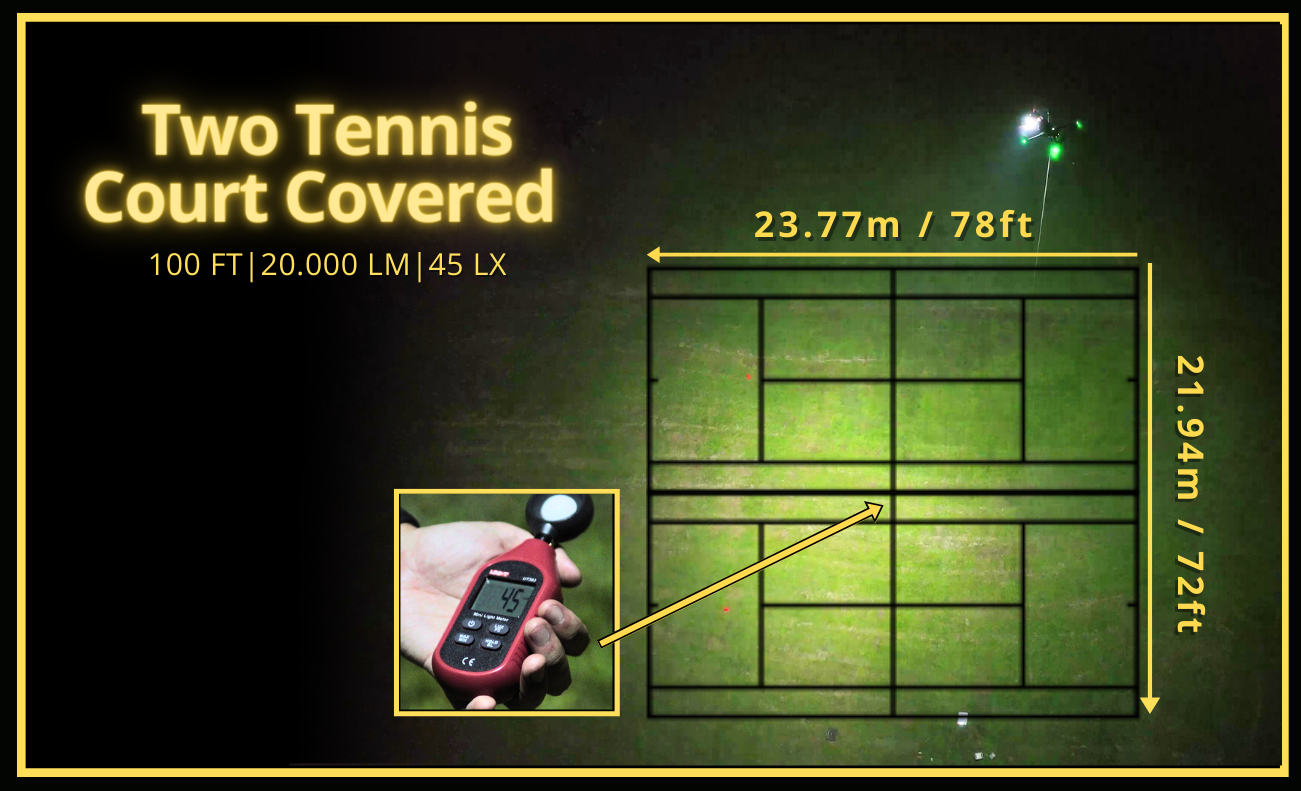Illuminating the Skies: A Comparison of Lighting Masts and Drone Lights
In today's rapidly evolving technological landscape, the need for efficient and adaptable lighting solutions. One such application is the provision of illumination in various scenarios, such as outdoor events, construction sites, emergency response, and more. Traditional lighting masts and drone lights are two innovative approaches to meeting these requirements. In this article, we will explore the key differences and advantages of these two methods for illuminating the dark.
Lighting Masts: The Classic Illumination Solution
Lighting masts have been a reliable source of illumination for outdoor spaces for decades. These towering structures, often equipped with powerful lamps, are set up in strategic locations or on the back of trucks to cast light over a designated area. Here are some key features of lighting masts:
Stability: Lighting masts are firmly anchored to the ground or sometimes mounted on the back of trucks, providing a stable and predictable source of illumination. They are especially suitable for long-term lighting needs, such as at construction sites or outdoor venues.
Brightness: Equipped with powerful light sources, lighting masts can offer intense, consistent illumination over a large area, making them ideal for sports events, construction projects, and emergency situations.
Customization: Many lighting masts are adjustable in height and direction, allowing for tailored illumination. This flexibility is advantageous when specific areas or angles need to be highlighted.
Reliability: Traditional lighting masts have a proven track record of reliability. They can withstand adverse weather conditions and continue to provide light even during power outages.
Cons
Lack of Mobility: One of the significant drawbacks of lighting masts is their lack of mobility. Once installed, they are stationary and cannot be easily moved to adapt to changing lighting requirements. This can be a limitation in dynamic environments where the need for illumination shifts.
Installation and Setup Time: Setting up a lighting mast can be time-consuming and may require heavy equipment and skilled personnel. This can delay the deployment of illumination in emergency situations or at temporary events.
Cost of Installation and Maintenance: The initial installation cost of lighting masts can be substantial, and ongoing maintenance is required to ensure their proper functioning. This can be expensive, especially for long-term projects.
Space and Visibility Obstruction: Lighting masts can take up space and obstruct visibility in certain environments. This can be a concern for construction sites, outdoor events, or locations with limited space.
Drone Lights: Taking Illumination to New Heights
Drone lights, on the other hand, are a more recent innovation, capitalizing on advancements in drone technology. These are unmanned aerial vehicles equipped with powerful lights payload. Let's delve into their characteristics:
Mobility: Drones are highly mobile and can illuminate areas that are difficult to reach with traditional lighting masts. They can be deployed swiftly, making them suitable for dynamic or time-sensitive situations.
Versatility: Drone lights can be used for a wide range of applications, from lighting outdoor events and search and rescue operations to providing temporary illumination for construction sites. Their versatility makes them a valuable tool in various scenarios.
Adaptability: Drones can be programmed to follow predefined flight paths or hover in a stationary position, offering precise control over where and how light is distributed.
Cons
V-Light, Extensive Drone Lighting Solution.
Limited Flight Time: One of the most significant disadvantages of drone lighting is limited flight time due to battery capacity. Drones need to be recharged or have their batteries replaced, which can interrupt continuous illumination and limit their use for long-term lighting needs, but what if there is a drone light that can fly in unlimited time? Check out this 20.000 Lumens drone lighting system, V-LIGHT.
Risk of Collisions: Drones carrying lighting equipment can pose a risk of collision with other objects or drones, especially in crowded or complex environments. This risk can lead to accidents and damage to the equipment.
Weather Limitations: Weather conditions such as strong winds, rain, or snow can affect the ability of drones to provide stable and reliable lighting. Adverse weather can restrict the use of drone lighting in some scenarios.
Skill and Training Requirements: Operating drones, especially in a professional setting, requires training and expertise. Inexperienced operators may struggle to effectively and safely deploy drone lighting.
Comparison and Considerations
Both lighting masts and drone lights have their unique advantages, and the choice between the two depends on the specific requirements of the task at hand. Here are some considerations when deciding between the two:
Cost: Lighting masts are generally more expensive and for long-term, stationary lighting needs. Drones may be a more valuable option to deploy, especially in emergency scenarios where theres no precise point and continuous illumination is required.
Mobility: If the area that needs illumination is vast, uneven, or constantly changing, drones provide the mobility and adaptability required to cover these dynamic spaces.
Brightness: Drone lighting typically offers greater flexibility in adjusting brightness levels as it can be controlled and directed precisely. It can also provide intense illumination in hard-to-reach areas. In contrast, mast lighting tends to provide a consistent and evenly distributed brightness over a larger area, making it a reliable choice for static, well-defined lighting needs. The choice between the two often depends on the specific lighting requirements of a given scenario.
In the quest for innovative lighting solutions, the choice between lighting masts and drone lights ultimately comes down to the specific requirements of the task. Traditional lighting masts offer stability, reliability, and cost-effectiveness, making them a go-to choice for many scenarios. However, drone lights are gaining popularity due to their mobility, adaptability, and versatility, making them well-suited for dynamic environments or when a rapid response is needed. As technology continues to advance, we can expect further developments in both lighting masts and drone lights, making these illumination options even more efficient and effective in the years to come.


